North America
North America is a continent entirely within the Northern Hemisphere and almost all within the Western Hemisphere. It can also be described as a northern subcontinent of the Americas, or America,[5][6] in models that use fewer than seven continents. It is bordered to the north by the Arctic Ocean, to the east by the Atlantic Ocean, to the west and south by the Pacific Ocean, and to the southeast by South America and the Caribbean Sea.
 | |
| Area | 24,709,000 km2 (9,540,000 sq mi) (3rd) |
|---|---|
| Population | 579,024,000 (2016; 4th) |
| Population density | 22.9/km2 (59.3/sq mi)[lower-alpha 1] |
| GDP (PPP) | $26.03 trillion (2019; 3rd)[1] |
| GDP (nominal) | $24.43 trillion (2019; 2nd)[2] |
| GDP per capita | $49,240 (2019; 2nd)[3] |
| Demonym | North American |
| Countries | 23 sovereign states |
| Dependencies | 23 non-sovereign territories |
| Languages | English, Spanish, French, and many others |
| Time zones | UTC-10 to UTC |
| Largest cities | List of urban areas:[4] |
| UN M49 code | 003 – North America019 – Americas001 – World |
North America covers an area of about 24,709,000 square kilometers (9,540,000 square miles), about 16.5% of the earth's land area and about 4.8% of its total surface. North America is the third-largest continent by area, following Asia and Africa,[7] and the fourth by population after Asia, Africa, and Europe.[8] In 2013, its population was estimated at nearly 579 million people in 23 independent states, or about 7.5% of the world's population, if nearby islands (most notably around the Caribbean) are included.
North America was reached by its first human populations during the last glacial period, via crossing the Bering land bridge approximately 40,000 to 17,000 years ago. The so-called Paleo-Indian period is taken to have lasted until about 10,000 years ago (the beginning of the Archaic or Meso-Indian period). The Classic stage spans roughly the 6th to 13th centuries. The Pre-Columbian era ended in 1492, with the beginning of the transatlantic migrations—the arrival of European settlers during the Age of Discovery and the Early Modern period. Present-day cultural and ethnic patterns reflect interactions between European colonists, indigenous peoples, African slaves and all of their descendants.
Owing to Europe's colonization of the Americas, most North Americans speak European languages such as English, Spanish or French, and their states' cultures commonly reflect Western traditions.
Name

The Americas are usually accepted as having been named after the Italian explorer Amerigo Vespucci by the German cartographers Martin Waldseemüller and Matthias Ringmann.[9] Vespucci, who explored South America between 1497 and 1502, was the first European to suggest that the Americas were not the East Indies, but a different landmass previously unknown by Europeans. In 1507, Waldseemüller produced a world map, in which he placed the word "America" on the continent of South America, in the middle of what is today Brazil. He explained the rationale for the name in the accompanying book Cosmographiae Introductio:[10]
... ab Americo inventore ... quasi Americi terram sive Americam (from Americus the discoverer ... as if it were the land of Americus, thus America).
For Waldseemüller, no one should object to the naming of the land after its discoverer. He used the Latinized version of Vespucci's name (Americus Vespucius), but in its feminine form "America", following the examples of "Europa", "Asia" and "Africa". Later, other mapmakers extended the name America to the northern continent. In 1538, Gerard Mercator used America on his map of the world for all the Western Hemisphere.[11]
Some argue that because the convention is to use the surname for naming discoveries (except in the case of royalty), the derivation from "Amerigo Vespucci" could be put in question.[12] In 1874, Thomas Belt proposed a derivation from the Amerrique mountains of Central America; the next year, Jules Marcou suggested that the name of the mountain range stemmed from indigenous American languages.[13] Marcou corresponded with Augustus Le Plongeon, who wrote: "The name AMERICA or AMERRIQUE in the Mayan language means, a country of perpetually strong wind, or the Land of the Wind, and ... the [suffixes] can mean ... a spirit that breathes, life itself."[11]
Extent
The United Nations formally recognizes "North America" as comprising three areas: Northern America, Central America, and The Caribbean. This has been formally defined by the UN Statistics Division.[14][15][16]
"Northern America", as a term distinct from "North America", excludes Central America, which itself may or may not include Mexico (see Central America § Different definitions). In the limited context of the North American Free Trade Agreement, the term covers Canada, the United States, and Mexico, which are the three signatories of that treaty.
France, Italy, Portugal, Spain, Romania, Greece, and the countries of Latin America use a six-continent model, with the Americas viewed as a single continent and North America designating a subcontinent comprising Canada, the United States, and Mexico, and often Greenland, Saint Pierre et Miquelon, and Bermuda.[17][18][19][20][21]
North America has been historically referred to by other names. Spanish North America (New Spain) was often referred to as Northern America, and this was the first official name given to Mexico.[22]
Regions
Geographically the North American continent has many regions and subregions. These include cultural, economic, and geographic regions. Economic regions included those formed by trade blocs, such as the North American Trade Agreement bloc and Central American Trade Agreement. Linguistically and culturally, the continent could be divided into Anglo-America and Latin America. Anglo-America includes most of Northern America, Belize, and Caribbean islands with English-speaking populations (though sub-national entities, such as Louisiana and Quebec, have large Francophone populations; in Quebec, French is the sole official language[23]).
The southern North American continent is composed of two regions. These are Central America and the Caribbean.[24][25] The north of the continent maintains recognized regions as well. In contrast to the common definition of "North America", which encompasses the whole continent, the term "North America" is sometimes used to refer only to Mexico, Canada, the United States, and Greenland.[26][27][28][29][30]
The term Northern America refers to the northern-most countries and territories of North America: the United States, Bermuda, St. Pierre and Miquelon, Canada and Greenland.[31][32] Although the term does not refer to a unified region,[33] Middle America—not to be confused with the Midwestern United States—groups the regions of Mexico, Central America, and the Caribbean.[34]
The largest countries of the continent, Canada and the United States, also contain well-defined and recognized regions. In the case of Canada these are (from east to west) Atlantic Canada, Central Canada, Canadian Prairies, the British Columbia Coast, and Northern Canada. These regions also contain many subregions. In the case of the United States – and in accordance with the US Census Bureau definitions – these regions are: New England, Mid-Atlantic, South Atlantic States, East North Central States, West North Central States, East South Central States, West South Central States, Mountain States, and Pacific States. Regions shared between both nations included the Great Lakes Region. Megalopolises have formed between both nations in the case of the Pacific Northwest and the Great Lakes Megaregion.
Countries, territories, and dependencies
| Arms | Flag | Country or territory[35][36][37] | Capital | Area[38] | Population (2018)[39][40] |
Population density |
|---|---|---|---|---|---|---|
| Anguilla (United Kingdom) |
The Valley | 91 km2 (35 sq mi) |
14,731 | 164.8/km2 (427/sq mi) | ||
| Antigua and Barbuda | St. John's | 442 km2 (171 sq mi) |
96,286 | 199.1/km2 (516/sq mi) | ||
| Aruba (Kingdom of the Netherlands)[lower-alpha 2] |
Oranjestad | 180 km2 (69 sq mi) |
105,845 | 594.4/km2 (1,539/sq mi) | ||
| The Bahamas[lower-alpha 3] | Nassau | 13,943 km2 (5,383 sq mi) |
385,637 | 24.5/km2 (63/sq mi) | ||
| Barbados | Bridgetown | 430 km2 (170 sq mi) |
286,641 | 595.3/km2 (1,542/sq mi) | ||
| Belize | Belmopan | 22,966 km2 (8,867 sq mi) |
383,071 | 13.4/km2 (35/sq mi) | ||
| Bermuda (United Kingdom) |
Hamilton | 54 km2 (21 sq mi) |
62,756 | 1,203.7/km2 (3,118/sq mi) | ||
| Bonaire (Kingdom of the Netherlands)[lower-alpha 2][41] |
Kralendijk | 294 km2 (114 sq mi) |
12,093 | 41.1/km2 (106/sq mi) | ||
| British Virgin Islands (United Kingdom) |
Road Town | 151 km2 (58 sq mi) |
29,802 | 152.3/km2 (394/sq mi) | ||
| Canada | Ottawa | 9,984,670 km2 (3,855,100 sq mi) |
37,064,562 | 3.7/km2 (9.6/sq mi) | ||
| Cayman Islands (United Kingdom) |
George Town | 264 km2 (102 sq mi) |
64,174 | 212.1/km2 (549/sq mi) | ||
| Clipperton Island (France) | — | 6 km2 (2.3 sq mi) |
0 | 0/km2 (0/sq mi) | ||
| Costa Rica | San José | 51,100 km2 (19,700 sq mi) |
4,999,441 | 89.6/km2 (232/sq mi) | ||
| Cuba | Havana | 109,886 km2 (42,427 sq mi) |
11,338,134 | 102.0/km2 (264/sq mi) | ||
| Curaçao (Kingdom of the Netherlands)[lower-alpha 2] |
Willemstad | 444 km2 (171 sq mi) |
162,752 | 317.1/km2 (821/sq mi) | ||
| Dominica | Roseau | 751 km2 (290 sq mi) |
71,625 | 89.2/km2 (231/sq mi) | ||
| Dominican Republic | Santo Domingo | 48,671 km2 (18,792 sq mi) |
10,627,141 | 207.3/km2 (537/sq mi) | ||
| El Salvador | San Salvador | 21,041 km2 (8,124 sq mi) |
6,420,746 | 293.0/km2 (759/sq mi) | ||
| Federal Dependencies of Venezuela (Venezuela) |
Gran Roque | 342 km2 (132 sq mi) |
2,155 | 6.3/km2 (16/sq mi) | ||
| Greenland (Kingdom of Denmark) |
Nuuk | 2,166,086 km2 (836,330 sq mi) |
56,564 | 0.026/km2 (0.067/sq mi) | ||
| Grenada | St. George's | 344 km2 (133 sq mi) |
111,454 | 302.3/km2 (783/sq mi) | ||
| Guadeloupe (France) |
Basse-Terre | 1,628 km2 (629 sq mi) |
399,848 | 246.7/km2 (639/sq mi) | ||
| Guatemala | Guatemala City | 108,889 km2 (42,042 sq mi) |
17,247,849 | 128.8/km2 (334/sq mi) | ||
| Haiti | Port-au-Prince | 27,750 km2 (10,710 sq mi) |
11,123,178 | 361.5/km2 (936/sq mi) | ||
| Honduras | Tegucigalpa | 112,492 km2 (43,433 sq mi) |
9,587,522 | 66.4/km2 (172/sq mi) | ||
| Jamaica | Kingston | 10,991 km2 (4,244 sq mi) |
2,934,847 | 247.4/km2 (641/sq mi) | ||
| Martinique (France) |
Fort-de-France | 1,128 km2 (436 sq mi) |
375,673 | 352.6/km2 (913/sq mi) | ||
| Mexico | Mexico City | 1,964,375 km2 (758,449 sq mi) |
126,190,788 | 57.1/km2 (148/sq mi) | ||
| Montserrat (United Kingdom) |
Plymouth, Brades[lower-alpha 4] |
102 km2 (39 sq mi) |
4,993 | 58.8/km2 (152/sq mi) | ||
| Nicaragua | Managua | 130,373 km2 (50,337 sq mi) |
6,465,501 | 44.1/km2 (114/sq mi) | ||
| Nueva Esparta (Venezuela) |
La Asunción | 1,151 km2 (444 sq mi) |
491,610 | 427.1/km2 (1,106/sq mi) | ||
| Panama[lower-alpha 2][lower-alpha 5] | Panama City | 75,417 km2 (29,119 sq mi) |
4,176,869 | 45.8/km2 (119/sq mi) | ||
| Puerto Rico (United States) |
San Juan | 8,870 km2 (3,420 sq mi) |
3,039,596 | 448.9/km2 (1,163/sq mi) | ||
| Saba (Kingdom of the Netherlands)[41] |
The Bottom | 13 km2 (5.0 sq mi) |
1,537 | 118.2/km2 (306/sq mi) | ||
| San Andrés and Providencia (Colombia) |
San Andrés | 53 km2 (20 sq mi) |
77,701 | 1,468.59/km2 (3,803.6/sq mi) | ||
| Saint Barthélemy (France)[42] |
Gustavia | 21 km2 (8.1 sq mi)[43] |
7,448 | 354.7/km2 (919/sq mi) | ||
| Saint Kitts and Nevis | Basseterre | 261 km2 (101 sq mi) |
52,441 | 199.2/km2 (516/sq mi) | ||
| Saint Lucia | Castries | 539 km2 (208 sq mi) |
181,889 | 319.1/km2 (826/sq mi) | ||
| Saint Martin (France)[42] |
Marigot | 54 km2 (21 sq mi)[43] |
29,820 | 552.2/km2 (1,430/sq mi) | ||
| Saint Pierre and Miquelon (France) |
Saint-Pierre | 242 km2 (93 sq mi) |
5,849 | 24.8/km2 (64/sq mi) | ||
| Saint Vincent and the Grenadines | Kingstown | 389 km2 (150 sq mi) |
110,211 | 280.2/km2 (726/sq mi) | ||
| Sint Eustatius (Kingdom of the Netherlands)[41] |
Oranjestad | 21 km2 (8.1 sq mi) |
2,739 | 130.4/km2 (338/sq mi) | ||
| Sint Maarten (Kingdom of the Netherlands) |
Philipsburg | 34 km2 (13 sq mi) |
41,940 | 1,176.7/km2 (3,048/sq mi) | ||
| Trinidad and Tobago[lower-alpha 2] | Port of Spain | 5,130 km2 (1,980 sq mi) |
1,389,843 | 261.0/km2 (676/sq mi) | ||
| Turks and Caicos Islands (United Kingdom)[lower-alpha 6] |
Cockburn Town | 948 km2 (366 sq mi) |
37,665 | 34.8/km2 (90/sq mi) | ||
| United States[lower-alpha 7] | Washington, D.C. | 9,629,091 km2 (3,717,813 sq mi) |
327,096,265 | 32.7/km2 (85/sq mi) | ||
| United States Virgin Islands (United States) |
Charlotte Amalie | 347 km2 (134 sq mi) |
104,680 | 317.0/km2 (821/sq mi) | ||
| Total | 24,500,995 | 541,720,440 | 22.1/km2 (57/sq mi) | |||
History
Geologic history
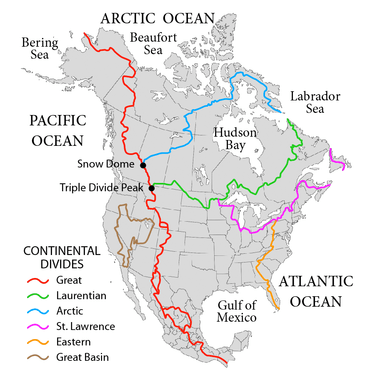
Laurentia is an ancient craton which forms the geologic core of North America; it formed between 1.5 and 1.0 billion years ago during the Proterozoic eon.[44] The Canadian Shield is the largest exposure of this craton. From the Late Paleozoic to Early Mesozoic eras, North America was joined with the other modern-day continents as part of the supercontinent Pangaea, with Eurasia to its east. One of the results of the formation of Pangaea was the Appalachian Mountains, which formed some 480 million years ago, making it among the oldest mountain ranges in the world. When Pangaea began to rift around 200 million years ago, North America became part of Laurasia, before it separated from Eurasia as its own continent during the mid-Cretaceous period.[45] The Rockies and other western mountain ranges began forming around this time from a period of mountain building called the Laramide orogeny, between 80 and 55 million years ago. The formation of the Isthmus of Panama that connected the continent to South America arguably occurred approximately 12 to 15 million years ago,[46] and the Great Lakes (as well as many other northern freshwater lakes and rivers) were carved by receding glaciers about 10,000 years ago.
North America is the source of much of what humanity knows about geologic time periods.[47] The geographic area that would later become the United States has been the source of more varieties of dinosaurs than any other modern country.[47] According to paleontologist Peter Dodson, this is primarily due to stratigraphy, climate and geography, human resources, and history.[47] Much of the Mesozoic Era is represented by exposed outcrops in the many arid regions of the continent.[47] The most significant Late Jurassic dinosaur-bearing fossil deposit in North America is the Morrison Formation of the western United States.[48]
Pre-Columbian

The indigenous peoples of the Americas have many creation myths by which they assert that they have been present on the land since its creation,[49] but there is no evidence that humans evolved there.[50] The specifics of the initial settlement of the Americas by ancient Asians are subject to ongoing research and discussion.[51] The traditional theory has been that hunters entered the Beringia land bridge between eastern Siberia and present-day Alaska from 27,000 to 14,000 years ago.[52][53][lower-alpha 8] A growing viewpoint is that the first American inhabitants sailed from Beringia some 13,000 years ago,[55] with widespread habitation of the Americas during the end of the Last Glacial Period, in what is known as the Late Glacial Maximum, around 12,500 years ago.[56] The oldest petroglyphs in North America date from 15,000 to 10,000 years before present.[57][lower-alpha 9] Genetic research and anthropology indicate additional waves of migration from Asia via the Bering Strait during the Early-Middle Holocene.[59][60][61]
Before contact with Europeans, the natives of North America were divided into many different polities, from small bands of a few families to large empires. They lived in several "culture areas", which roughly correspond to geographic and biological zones and give a good indication of the main way of life of the people who lived there (e.g., the bison hunters of the Great Plains, or the farmers of Mesoamerica). Native groups can also be classified by their language family (e.g., Athapascan or Uto-Aztecan). Peoples with similar languages did not always share the same material culture, nor were they always allies. Anthropologists think that the Inuit people of the high Arctic came to North America much later than other native groups, as evidenced by the disappearance of Dorset culture artifacts from the archaeological record, and their replacement by the Thule people.
During the thousands of years of native habitation on the continent, cultures changed and shifted. One of the oldest yet discovered is the Clovis culture (c. 9550–9050 BCE) in modern New Mexico.[58] Later groups include the Mississippian culture and related Mound building cultures, found in the Mississippi river valley and the Pueblo culture of what is now the Four Corners. The more southern cultural groups of North America were responsible for the domestication of many common crops now used around the world, such as tomatoes, squash, and maize. As a result of the development of agriculture in the south, many other cultural advances were made there. The Mayans developed a writing system, built huge pyramids and temples, had a complex calendar, and developed the concept of zero around 400 CE.[62]
The first recorded European references to North America are in Norse sagas where it is referred to as Vinland.[63] The earliest verifiable instance of pre-Columbian trans-oceanic contact by any European culture with the North America mainland has been dated to around 1000 CE.[64] The site, situated at the northernmost extent of the island named Newfoundland, has provided unmistakable evidence of Norse settlement.[65] Norse explorer Leif Erikson (c. 970–1020 CE) is thought to have visited the area.[lower-alpha 10] Erikson was the first European to make landfall on the continent (excluding Greenland).[67][68]
The Mayan culture was still present in southern Mexico and Guatemala when the Spanish conquistadors arrived, but political dominance in the area had shifted to the Aztec Empire, whose capital city Tenochtitlan was located further north in the Valley of Mexico. The Aztecs were conquered in 1521 by Hernán Cortés.[69]
Colonial period

During the Age of Discovery, Europeans explored and staked claims to various parts of North America. Upon their arrival in the "New World", the Native American population declined substantially, because of violent conflicts with the invaders and the introduction of European diseases to which the Native Americans lacked immunity.[70] Native culture changed drastically and their affiliation with political and cultural groups also changed. Several linguistic groups died out, and others changed quite quickly. The names and cultures that Europeans recorded were not necessarily the same as the names they had used a few generations before, or the ones in use today.
Britain, Spain, and France took over extensive territories in North America. In the late 18th and early 19th century, independence movements sprung up across the continent, leading to the founding of the modern countries in the area. The 13 British Colonies on the North Atlantic coast declared independence in 1776, becoming the United States of America. Canada was formed from the unification of northern territories controlled by Britain and France. New Spain, a territory that stretched from the modern-day southern US to Central America, declared independence in 1810, becoming the First Mexican Empire. In 1823 the former Captaincy General of Guatemala, then part of the Mexican Empire, became the first independent state in Central America, officially changing its name to the United Provinces of Central America.
Over three decades of work on the Panama Canal led to the connection of Atlantic and Pacific waters in 1913, physically making North America a separate continent.
Geography
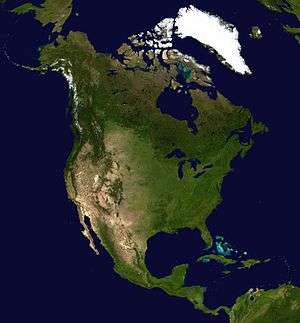
North America occupies the northern portion of the landmass generally referred to as the New World, the Western Hemisphere, the Americas, or simply America (which, less commonly, is considered by some as a single continent[71][72][73] with North America a subcontinent).[74] North America's only land connection to South America is at the Isthmus of Darian/ Isthmus of Panama. The continent is delimited on the southeast by most geographers at the Darién watershed along the Colombia-Panama border, placing almost all of Panama within North America.[75][76][77] Alternatively, some geologists physiographically locate its southern limit at the Isthmus of Tehuantepec, Mexico, with Central America extending southeastward to South America from this point.[78] The Caribbean islands, or West Indies, are considered part of North America.[5] The continental coastline is long and irregular. The Gulf of Mexico is the largest body of water indenting the continent, followed by Hudson Bay. Others include the Gulf of Saint Lawrence and the Gulf of California.
Before the Central American isthmus formed, the region had been underwater. The islands of the West Indies delineate a submerged former land bridge, which had connected North and South America via what are now Florida and Venezuela.
There are numerous islands off the continent's coasts; principally, the Arctic Archipelago, the Bahamas, Turks & Caicos, the Greater and Lesser Antilles, the Aleutian Islands (some of which are in the Eastern Hemisphere proper), the Alexander Archipelago, the many thousand islands of the British Columbia Coast, and Newfoundland. Greenland, a self-governing Danish island, and the world's largest, is on the same tectonic plate (the North American Plate) and is part of North America geographically. In a geologic sense, Bermuda is not part of the Americas, but an oceanic island which was formed on the fissure of the Mid-Atlantic Ridge over 100 million years ago. The nearest landmass to it is Cape Hatteras, North Carolina. However, Bermuda is often thought of as part of North America, especially given its historical, political and cultural ties to Virginia and other parts of the continent.
The vast majority of North America is on the North American Plate. Parts of western Mexico, including Baja California, and of California, including the cities of San Diego, Los Angeles, and Santa Cruz, lie on the eastern edge of the Pacific Plate, with the two plates meeting along the San Andreas fault. The southernmost portion of the continent and much of the West Indies lie on the Caribbean Plate, whereas the Juan de Fuca and Cocos plates border the North American Plate on its western frontier.
The continent can be divided into four great regions (each of which contains many subregions): the Great Plains stretching from the Gulf of Mexico to the Canadian Arctic; the geologically young, mountainous west, including the Rocky Mountains, the Great Basin, California and Alaska; the raised but relatively flat plateau of the Canadian Shield in the northeast; and the varied eastern region, which includes the Appalachian Mountains, the coastal plain along the Atlantic seaboard, and the Florida peninsula. Mexico, with its long plateaus and cordilleras, falls largely in the western region, although the eastern coastal plain does extend south along the Gulf.
The western mountains are split in the middle into the main range of the Rockies and the coast ranges in California, Oregon, Washington, and British Columbia, with the Great Basin—a lower area containing smaller ranges and low-lying deserts—in between. The highest peak is Denali in Alaska.
The United States Geographical Survey (USGS) states that the geographic center of North America is "6 miles [10 km] west of Balta, Pierce County, North Dakota" at about 48°10′N 100°10′W, about 24 kilometres (15 mi) from Rugby, North Dakota. The USGS further states that "No marked or monumented point has been established by any government agency as the geographic center of either the 50 States, the conterminous United States, or the North American continent." Nonetheless, there is a 4.6-metre (15 ft) field stone obelisk in Rugby claiming to mark the center. The North American continental pole of inaccessibility is located 1,650 km (1,030 mi) from the nearest coastline, between Allen and Kyle, South Dakota at 43.36°N 101.97°W.[79]
Geology


Canadian geology
Geologically, Canada is one of the oldest regions in the world, with more than half of the region consisting of precambrian rocks that have been above sea level since the beginning of the Palaeozoic era.[80] Canada's mineral resources are diverse and extensive.[80] Across the Canadian Shield and in the north there are large iron, nickel, zinc, copper, gold, lead, molybdenum, and uranium reserves. Large diamond concentrations have been recently developed in the Arctic,[81] making Canada one of the world's largest producers. Throughout the Shield there are many mining towns extracting these minerals. The largest, and best known, is Sudbury, Ontario. Sudbury is an exception to the normal process of forming minerals in the Shield since there is significant evidence that the Sudbury Basin is an ancient meteorite impact crater. The nearby, but less known Temagami Magnetic Anomaly has striking similarities to the Sudbury Basin. Its magnetic anomalies are very similar to the Sudbury Basin, and so it could be a second metal-rich impact crater.[82] The Shield is also covered by vast boreal forests that support an important logging industry.
United States geology
The lower 48 US states can be divided into roughly five physiographic provinces:
- The American cordillera
- The Canadian Shield[80] Northern portion of the upper midwestern United States.
- The stable platform
- The coastal plain
- The Appalachian orogenic belt
The geology of Alaska is typical of that of the cordillera, while the major islands of Hawaii consist of Neogene volcanics erupted over a hot spot.
Central American geology

Central America is geologically active with volcanic eruptions and earthquakes occurring from time to time. In 1976 Guatemala was hit by a major earthquake, killing 23,000 people; Managua, the capital of Nicaragua, was devastated by earthquakes in 1931 and 1972, the last one killing about 5,000 people; three earthquakes devastated El Salvador, one in 1986 and two in 2001; one earthquake devastated northern and central Costa Rica in 2009, killing at least 34 people; in Honduras a powerful earthquake killed seven people in 2009.
Volcanic eruptions are common in the region. In 1968 the Arenal Volcano, in Costa Rica, erupted and killed 87 people. Fertile soils from weathered volcanic lavas have made it possible to sustain dense populations in the agriculturally productive highland areas.
Central America has many mountain ranges; the longest are the Sierra Madre de Chiapas, the Cordillera Isabelia, and the Cordillera de Talamanca. Between the mountain ranges lie fertile valleys that are suitable for the people; in fact, most of the population of Honduras, Costa Rica, and Guatemala live in valleys. Valleys are also suitable for the production of coffee, beans, and other crops.
Climate
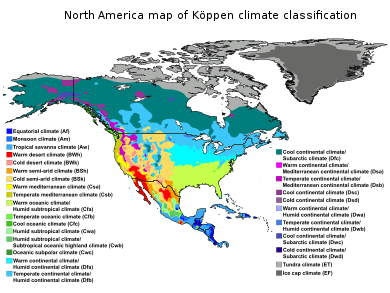
North America is a very large continent which surpasses the Arctic Circle, and the Tropic of Cancer. Greenland, along with the Canadian Shield, is tundra with average temperatures ranging from 10 to 20 °C (50 to 68 °F), but central Greenland is composed of a very large ice sheet. This tundra radiates throughout Canada, but its border ends near the Rocky Mountains (but still contains Alaska) and at the end of the Canadian Shield, near the Great Lakes. Climate west of the Cascades is described as being a temperate weather with average precipitation 20 inches (510 mm).[83] Climate in coastal California is described to be Mediterranean, with average temperatures in cities like San Francisco ranging from 57 to 70 °F (14 to 21 °C) over the course of the year.[84]
Stretching from the East Coast to eastern North Dakota, and stretching down to Kansas, is the continental-humid climate featuring intense seasons, with a large amount of annual precipitation, with places like New York City averaging 50 inches (1,300 mm).[85] Starting at the southern border of the continental-humid climate and stretching to the Gulf of Mexico (whilst encompassing the eastern half of Texas) is the subtropical climate. This area has the wettest cities in the contiguous U.S. with annual precipitation reaching 67 inches (1,700 mm) in Mobile, Alabama.[86] Stretching from the borders of the continental humid and subtropical climates, and going west to the Cascades Sierra Nevada, south to the southern tip of durango, north to the border with tundra climate, the steppe/desert climate is the driest climate in the U.S.[87] Highland climates cut from north to south of the continent, where subtropical or temperate climates occur just below the tropics, as in central Mexico and Guatemala. Tropical climates appear in the island regions and in the subcontinent's bottleneck. Usually of the savannah type, with rains and high temperatures constants the whole year. Found in countries and states bathed by the Caribbean Sea or to south of the Gulf of Mexico and Pacific Ocean.[88]
Ecology
Notable North American fauna include the bison, black bear, prairie dog, turkey, pronghorn, raccoon, coyote and monarch butterfly.
Notable plants that were domesticated in North America include tobacco, maize, squash, tomato, sunflower, blueberry, avocado, cotton, chile pepper and vanilla.
Demographics
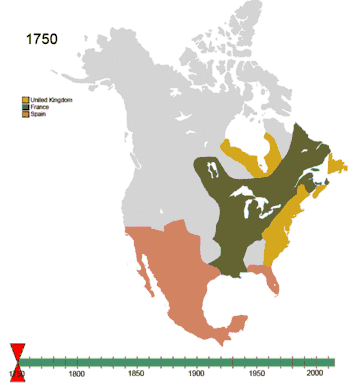
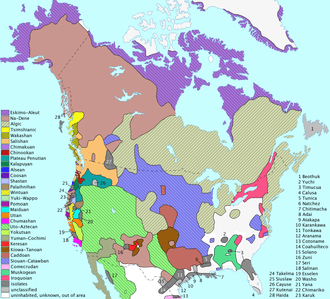
Economically, Canada and the United States are the wealthiest and most developed nations in the continent, followed by Mexico, a newly industrialized country.[89] The countries of Central America and the Caribbean are at various levels of economic and human development. For example, small Caribbean island-nations, such as Barbados, Trinidad and Tobago, and Antigua and Barbuda, have a higher GDP (PPP) per capita than Mexico due to their smaller populations. Panama and Costa Rica have a significantly higher Human Development Index and GDP than the rest of the Central American nations.[90] Additionally, despite Greenland's vast resources in oil and minerals, much of them remain untapped, and the island is economically dependent on fishing, tourism, and subsidies from Denmark. Nevertheless, the island is highly developed.[91]
Demographically, North America is ethnically diverse. Its three main groups are Caucasians, Mestizos and Blacks. There is a significant minority of Indigenous Americans and Asians among other less numerous groups.
Languages
The dominant languages in North America are English, Spanish, and French. Danish is prevalent in Greenland alongside Greenlandic, and Dutch is spoken side by side local languages in the Dutch Caribbean. The term Anglo-America is used to refer to the anglophone countries of the Americas: namely Canada (where English and French are co-official) and the United States, but also sometimes Belize and parts of the tropics, especially the Commonwealth Caribbean. Latin America refers to the other areas of the Americas (generally south of the United States) where the Romance languages, derived from Latin, of Spanish and Portuguese (but French speaking countries are not usually included) predominate: the other republics of Central America (but not always Belize), part of the Caribbean (not the Dutch-, English-, or French-speaking areas), Mexico, and most of South America (except Guyana, Suriname, French Guiana (France), and the Falkland Islands (UK)).
The French language has historically played a significant role in North America and now retains a distinctive presence in some regions. Canada is officially bilingual. French is the official language of the Province of Quebec, where 95% of the people speak it as either their first or second language, and it is co-official with English in the Province of New Brunswick. Other French-speaking locales include the Province of Ontario (the official language is English, but there are an estimated 600,000 Franco-Ontarians), the Province of Manitoba (co-official as de jure with English), the French West Indies and Saint-Pierre et Miquelon, as well as the US state of Louisiana, where French is also an official language. Haiti is included with this group based on historical association but Haitians speak both Creole and French. Similarly, French and French Antillean Creole is spoken in Saint Lucia and the Commonwealth of Dominica alongside English.
A significant number of Indigenous languages are spoken in North America, with 372,000 people in the United States speaking an indigenous language at home,[92], about 225,000 in Canada[93] and roughly 6 million in Mexico[94]. In the United States and Canada, there are approximately 150 surviving indigenous languages of the 300 spoken prior to European contact[95].
Religions

Christianity is the largest religion in the United States, Canada and Mexico. According to a 2012 Pew Research Center survey, 77% of the population considered themselves Christians.[96] Christianity also is the predominant religion in the 23 dependent territories in North America.[97] The United States has the largest Christian population in the world, with nearly 247 million Christians (70%), although other countries have higher percentages of Christians among their populations.[98] Mexico has the world's second largest number of Catholics, surpassed only by Brazil.[99] A 2015 study estimates about 493,000 Christian believers from a Muslim background in North America, most of them belonging to some form of Protestantism.[100]
According to the same study religiously unaffiliated (include agnostic and atheist) make up about 17% of the population of Canada and the United States.[101] No religion make up about 24% of the United States population, and 24% of Canada total population.[102]
Canada, the United States and Mexico host communities of both Jews (6 million or about 1.8%),[103] Buddhists (3.8 million or 1.1%)[104] and Muslims (3.4 million or 1.0%).[105] The biggest number of Jewish individuals can be found in the United States (5.4 million),[106] Canada (375,000)[107] and Mexico (67,476).[108] The United States host the largest Muslim population in North America with 2.7 million or 0.9%,[109][110] While Canada host about one million Muslim or 3.2% of the population.[111] While in Mexico there were 3,700 Muslims in the country.[112] In 2012, U-T San Diego estimated U.S. practitioners of Buddhism at 1.2 million people, of whom 40% are living in Southern California.[113]
The predominant religion in Central America is Christianity (96%).[114] Beginning with the Spanish colonization of Central America in the 16th century, Roman Catholicism became the most popular religion in the region until the first half of the 20th century. Since the 1960s, there has been an increase in other Christian groups, particularly Protestantism, as well as other religious organizations, and individuals identifying themselves as having no religion. Also Christianity is the predominant religion in the Caribbean (85%).[114] Other religious groups in the region are Hinduism, Islam, Rastafari (in Jamaica), and Afro-American religions such as Santería and Vodou.
Populace
The most populous country in North America is the United States with 329.7 million persons. The second largest country is Mexico with a population of 112.3 million.[115] Canada is the third most populous country with 37.0 million.[116] The majority of Caribbean island-nations have national populations under a million, though Cuba, Dominican Republic, Haiti, Puerto Rico (a territory of the United States), Jamaica, and Trinidad and Tobago each have populations higher than a million.[117][118][119][120][121] Greenland has a small population of 55,984 for its massive size (2,166,000 km² or 836,300 mi²), and therefore, it has the world's lowest population density at 0.026 pop./km² (0.067 pop./mi²).[122]
While the United States, Canada, and Mexico maintain the largest populations, large city populations are not restricted to those nations. There are also large cities in the Caribbean. The largest cities in North America, by far, are Mexico City and New York. These cities are the only cities on the continent to exceed eight million, and two of three in the Americas. Next in size are Los Angeles, Toronto,[123] Chicago, Havana, Santo Domingo, and Montreal. Cities in the sun belt regions of the United States, such as those in Southern California and Houston, Phoenix, Miami, Atlanta, and Las Vegas, are experiencing rapid growth. These causes included warm temperatures, retirement of Baby Boomers, large industry, and the influx of immigrants. Cities near the United States border, particularly in Mexico, are also experiencing large amounts of growth. Most notable is Tijuana, a city bordering San Diego that receives immigrants from all over Latin America and parts of Europe and Asia. Yet as cities grow in these warmer regions of North America, they are increasingly forced to deal with the major issue of water shortages.[124]
Eight of the top ten metropolitan areas are located in the United States. These metropolitan areas all have a population of above 5.5 million and include the New York City metropolitan area, Los Angeles metropolitan area, Chicago metropolitan area, and the Dallas–Fort Worth metroplex.[125] Whilst the majority of the largest metropolitan areas are within the United States, Mexico is host to the largest metropolitan area by population in North America: Greater Mexico City.[126] Canada also breaks into the top ten largest metropolitan areas with the Toronto metropolitan area having six million people.[127] The proximity of cities to each other on the Canada–United States border and Mexico–United States border has led to the rise of international metropolitan areas. These urban agglomerations are observed at their largest and most productive in Detroit–Windsor and San Diego–Tijuana and experience large commercial, economic, and cultural activity. The metropolitan areas are responsible for millions of dollars of trade dependent on international freight. In Detroit-Windsor the Border Transportation Partnership study in 2004 concluded US$13 billion was dependent on the Detroit–Windsor international border crossing while in San Diego-Tijuana freight at the Otay Mesa Port of Entry was valued at US$20 billion.[128][129]
North America has also been witness to the growth of megapolitan areas. In the United States exists eleven megaregions that transcend international borders and comprise Canadian and Mexican metropolitan regions. These are the Arizona Sun Corridor, Cascadia, Florida, Front Range, Great Lakes Megaregion, Gulf Coast Megaregion, Northeast, Northern California, Piedmont Atlantic, Southern California, and the Texas Triangle.[130] Canada and Mexico are also the home of megaregions. These include the Quebec City – Windsor Corridor, Golden Horseshoe – both of which are considered part of the Great Lakes Megaregion – and megalopolis of Central Mexico. Traditionally the largest megaregion has been considered the Boston-Washington, DC Corridor, or the Northeast, as the region is one massive contiguous area. Yet megaregion criterion have allowed the Great Lakes Megalopolis to maintain status as the most populated region, being home to 53,768,125 people in 2000.[131]
The top ten largest North American metropolitan areas by population as of 2013, based on national census numbers from the United States and census estimates from Canada and Mexico.
| Metro Area | Population | Area | Country |
| Mexico City | 21,163,226† | 7,346 km2 (2,836 sq mi) | Mexico |
| New York City | 19,949,502 | 17,405 km2 (6,720 sq mi) | United States |
| Los Angeles | 13,131,431 | 12,562 km2 (4,850 sq mi) | United States |
| Chicago | 9,537,289 | 24,814 km2 (9,581 sq mi) | United States |
| Dallas–Fort Worth | 6,810,913 | 24,059 km2 (9,289 sq mi) | United States |
| Houston | 6,313,158 | 26,061 km2 (10,062 sq mi) | United States |
| Toronto | 6,054,191† | 5,906 km2 (2,280 sq mi) | Canada |
| Philadelphia | 6,034,678 | 13,256 km2 (5,118 sq mi) | United States |
| Washington, DC | 5,949,859 | 14,412 km2 (5,565 sq mi) | United States |
| Miami | 5,828,191 | 15,896 km2 (6,137 sq mi) | United States |
†2011 Census figures.
Economy
| Rank | Country | GDP[132] (PPP, peak year) millions of USD |
Peak year |
|---|---|---|---|
| 1 | 21,427,675 | 2019 | |
| 2 | 2,616,289 | 2019 | |
| 3 | 1,904,393 | 2019 | |
| 4 | 254,865 | 2015 | |
| 5 | 199,395 | 2019 | |
| 6 | 152,779 | 2019 | |
| 7 | 130,927 | 2014 | |
| 8 | 111,998 | 2019 | |
| 9 | 92,062 | 2019 | |
| 10 | 55,578 | 2019 |
| Rank | Country | GDP (nominal, peak year) millions of USD |
Peak year |
|---|---|---|---|
| 1 | 21,427,675 | 2019 | |
| 2 | 1,846,595 | 2013 | |
| 3 | 1,322,489 | 2020 | |
| 4 | 104,337 | 2016 | |
| 5 | 96,851 | 2017 | |
| 6 | 96,291 | 2020 | |
| 7 | 86,397 | 2020 | |
| 8 | 73,369 | 2020 | |
| 9 | 65,179 | 2020 | |
| 10 | 28,233 | 2008 |
North America's GDP per capita was evaluated in October 2016 by the International Monetary Fund (IMF) to be $41,830, making it the richest continent in the world,[133] followed by Oceania.[134]
Canada, Mexico, and the United States have significant and multifaceted economic systems. The United States has the largest economy of all three countries and in the world.[134] In 2016, the U.S. had an estimated per capita gross domestic product (PPP) of $57,466 according to the World Bank, and is the most technologically developed economy of the three.[135] The United States' services sector comprises 77% of the country's GDP (estimated in 2010), industry comprises 22% and agriculture comprises 1.2%.[134] The U.S. economy is also the fastest growing economy in North America and the Americas as a whole,[136][133] with the highest GDP per capita in the Americas as well.[133]
.jpg)
Canada shows significant growth in the sectors of services, mining and manufacturing.[137] Canada's per capita GDP (PPP) was estimated at $44,656 and it had the 11th largest GDP (nominal) in 2014.[137] Canada's services sector comprises 78% of the country's GDP (estimated in 2010), industry comprises 20% and agriculture comprises 2%.[137] Mexico has a per capita GDP (PPP) of $16,111 and as of 2014 is the 15th largest GDP (nominal) in the world.[138] Being a newly industrialized country,[89] Mexico maintains both modern and outdated industrial and agricultural facilities and operations.[139] Its main sources of income are oil, industrial exports, manufactured goods, electronics, heavy industry, automobiles, construction, food, banking and financial services.[140]
The North American economy is well defined and structured in three main economic areas.[141] These areas are the North American Free Trade Agreement (NAFTA), Caribbean Community and Common Market (CARICOM), and the Central American Common Market (CACM).[141] Of these trade blocs, the United States takes part in two. In addition to the larger trade blocs there is the Canada-Costa Rica Free Trade Agreement among numerous other free trade relations, often between the larger, more developed countries and Central American and Caribbean countries.
The North America Free Trade Agreement (NAFTA) forms one of the four largest trade blocs in the world.[142] Its implementation in 1994 was designed for economic homogenization with hopes of eliminating barriers of trade and foreign investment between Canada, the United States and Mexico.[143] While Canada and the United States already conducted the largest bilateral trade relationship – and to present day still do – in the world and Canada–United States trade relations already allowed trade without national taxes and tariffs,[144] NAFTA allowed Mexico to experience a similar duty-free trade. The free trade agreement allowed for the elimination of tariffs that had previously been in place on United States-Mexico trade. Trade volume has steadily increased annually and in 2010, surface trade between the three NAFTA nations reached an all-time historical increase of 24.3% or US$791 billion.[145] The NAFTA trade bloc GDP (PPP) is the world's largest with US$17.617 trillion.[146] This is in part attributed to the fact that the economy of the United States is the world's largest national economy; the country had a nominal GDP of approximately $14.7 trillion in 2010.[147] The countries of NAFTA are also some of each other's largest trade partners. The United States is the largest trade partner of Canada and Mexico;[148] while Canada and Mexico are each other's third largest trade partners.[149][150]
%2C_2018.jpg)
The Caribbean trade bloc – CARICOM – came into agreement in 1973 when it was signed by 15 Caribbean nations. As of 2000, CARICOM trade volume was US$96 billion. CARICOM also allowed for the creation of a common passport for associated nations. In the past decade the trade bloc focused largely on Free Trade Agreements and under the CARICOM Office of Trade Negotiations (OTN) free trade agreements have been signed into effect.
Integration of Central American economies occurred under the signing of the Central American Common Market agreement in 1961; this was the first attempt to engage the nations of this area into stronger financial cooperation. Recent implementation of the Central American Free Trade Agreement (CAFTA) has left the future of the CACM unclear.[151] The Central American Free Trade Agreement was signed by five Central American countries, the Dominican Republic, and the United States. The focal point of CAFTA is to create a free trade area similar to that of NAFTA. In addition to the United States, Canada also has relations in Central American trade blocs. Currently under proposal, the Canada – Central American Free Trade Agreement (CA4) would operate much the same as CAFTA with the United States does.
These nations also take part in inter-continental trade blocs. Mexico takes a part in the G3 Free Trade Agreement with Colombia and Venezuela and has a trade agreement with the EU. The United States has proposed and maintained trade agreements under the Transatlantic Free Trade Area between itself and the European Union; the US-Middle East Free Trade Area between numerous Middle Eastern nations and itself; and the Trans-Pacific Strategic Economic Partnership between Southeast Asian nations, Australia, and New Zealand.
Transport

The Pan-American Highway route in the Americas is the portion of a network of roads nearly 48,000 km (30,000 mi) in length which travels through the mainland nations. No definitive length of the Pan-American Highway exists because the US and Canadian governments have never officially defined any specific routes as being part of the Pan-American Highway, and Mexico officially has many branches connecting to the US border. However, the total length of the portion from Mexico to the northern extremity of the highway is roughly 26,000 km (16,000 mi).

The First Transcontinental Railroad in the United States was built in the 1860s, linking the railroad network of the eastern US with California on the Pacific coast. Finished on 10 May 1869 at the famous golden spike event at Promontory Summit, Utah, it created a nationwide mechanized transportation network that revolutionized the population and economy of the American West, catalyzing the transition from the wagon trains of previous decades to a modern transportation system.[152] Although an accomplishment, it achieved the status of first transcontinental railroad by connecting myriad eastern US railroads to the Pacific and was not the largest single railroad system in the world. The Canadian Grand Trunk Railway (GTR) had, by 1867, already accumulated more than 2,055 km (1,277 mi) of track by connecting Ontario with the Canadian Atlantic provinces west as far as Port Huron, Michigan, through Sarnia, Ontario.
Communications
A shared telephone system known as the North American Numbering Plan (NANP) is an integrated telephone numbering plan of 24 countries and territories: the United States and its territories, Canada, Bermuda, and 17 Caribbean nations.
Culture

Canada and the United States were both former British colonies. There is frequent cultural interplay between the United States and English-speaking Canada.
Greenland has experienced many immigration waves from Northern Canada, e.g. the Thule People. Therefore, Greenland shares some cultural ties with the indigenous people of Canada. Greenland is also considered Nordic and has strong Danish ties due to centuries of colonization by Denmark.[153]
Spanish-speaking North America shares a common past as former Spanish colonies. In Mexico and the Central American countries where civilizations like the Maya developed, indigenous people preserve traditions across modern boundaries. Central American and Spanish-speaking Caribbean nations have historically had more in common due to geographical proximity.
Northern Mexico, particularly in the cities of Monterrey, Tijuana, Ciudad Juárez, and Mexicali, is strongly influenced by the culture and way of life of the United States. Of the aforementioned cities, Monterrey has been regarded as the most Americanized city in Mexico.[154] Immigration to the United States and Canada remains a significant attribute of many nations close to the southern border of the US. The Anglophone Caribbean states have witnessed the decline of the British Empire and its influence on the region, and its replacement by the economic influence of Northern America in the Anglophone Caribbean. This is partly due to the relatively small populations of the English-speaking Caribbean countries, and also because many of them now have more people living abroad than those remaining at home. Northern Mexico, the Western United States and Alberta, Canada share a cowboy culture.
Sports
Canada, Mexico and the US submitted a joint bid to host the 2026 FIFA World Cup. The following table shows the most prominent sports leagues in North America, in order of average revenue.[155][156]
| League | Sport | Primary country | Founded | Teams | Revenue US$ (bn) | Average Attendance |
|---|---|---|---|---|---|---|
| National Football League (NFL) | American football | United States | 1920 | 32 | $9.0 | 67,604 |
| Major League Baseball (MLB) | Baseball | United States Canada | 1869 | 30 | $8.0 | 30,458 |
| National Basketball Association (NBA) | Basketball | United States Canada | 1946 | 30 | $5.0 | 17,347 |
| National Hockey League (NHL) | Ice hockey | United States Canada | 1917 | 31 | $3.3 | 17,720 |
| Liga MX | Football (soccer) | Mexico | 1943 | 18 | $0.6 | 25,557 |
| Major League Soccer (MLS) | Football (soccer) | United States Canada | 1994 | 24[sn 1] | $0.5 | 21,574 |
| Canadian Football League (CFL) | Canadian football | Canada | 1958 | 9 | $0.3 | 23,890 |
- MLS plans to expand to 26 teams in 2020, and to 28 teams by 2022.
See also
- Outline of North America – 1=Overview of and topical guide to North America
- Flags of North America
- List of cities in North America – Wikimedia list article
- Table manners in North America
- Turtle Island (Native American folklore) – Name for North America among Native Americans
References
Footnotes
- This North American density figure is based on a total land area of 23,090,542 km2 only, considerably less than the total combined land and water area of 24,709,000 km2.
- Depending on definitions, Aruba, Bonaire, Curaçao, Panama, and Trinidad and Tobago have territory in either or both of North and South America.
- Since the Lucayan Archipelago is located in the Atlantic Ocean rather than Caribbean Sea, the Bahamas are part of the West Indies but are not technically part of the Caribbean, although the United Nations groups them with the Caribbean.
- Because of ongoing activity of the Soufriere Hills volcano beginning in July 1995, much of Plymouth was destroyed and government offices were relocated to Brades. Plymouth remains the de jure capital.
- Panama is generally considered a North American country, though some authorities divide it at the Panama Canal. Figures listed here are for the entire country.
- Since the Lucayan Archipelago is located in the Atlantic Ocean rather than Caribbean Sea, the Turks and Caicos Islands are part of the West Indies but are not technically part of the Caribbean, although the United Nations groups them with the Caribbean.
- Includes the states of Hawaii and Alaska which are both separated from the US mainland, with Hawaii distant from the North American landmass in the Pacific Ocean and therefore more commonly associated with the other territories of Oceania while Alaska is located between Asia (Russia) and Canada.
- The receding of oceans during successive ice ages may have enabled migrants to cross the land bridge as far back as 40,000 years.[54]
- While not conclusive, some South American rock painting has been dated to 25,000 years ago.[58]
- Descriptions of sites Erikson explored seem to correspond to Baffin Island, the Labrador coast near Cape Porcupine, as well as Belle Isle, and a site which led him to name the country Vinland ('Wineland').[66]
Citations
- "GDP PPP, current prices". International Monetary Fund. Retrieved 20 April 2019.
- "GDP Nominal, current prices". International Monetary Fund. Retrieved 20 April 2019.
- "Nominal GDP per capita". International Monetary Fund. Retrieved 20 April 2019.
- "Demographia.com" (PDF).
- "North America". Encyclopædia Britannica. Retrieved 3 February 2014.
- "Map And Details Of All 7 Continents". worldatlas.com. Retrieved 2 September 2016.
In some parts of the world students are taught that there are only six continents, as they combine North America and South America into one continent called the Americas.
- "North America Land Forms and Statistics". World Atlas.com. Retrieved 16 June 2013.
- "North America Fast Facts". World Atlas.com. Retrieved 16 June 2013.
- "Amerigo Vespucci". Encyclopædia Britannica. Retrieved 7 July 2011.
- Herbermann, Charles George, ed. (1907). The Cosmographiæ Introductio of Martin Waldseemüller in Facsimile. Translated by Edward Burke and Mario E. Cosenza, introduction by Joseph Fischer and Franz von Wieser. New York: The United States Catholic Historical Society. p. 9.
Latin: "Quarta pars per Americum Vesputium (ut in sequentibus audietur) inventa est, quam non video, cur quis jure vetet, ab Americo inventore sagacis ingenii viro Amerigen quasi Americi terram sive Americam dicendam, cum et Europa et Asia a mulieribus sua sortita sint nomina."
- Jonathan Cohen. "The Naming of America: Fragments We've Shored Against Ourselves". Retrieved 3 February 2014.
- Lloyd, John; Mitchinson, John (2006). The Book of General Ignorance. Harmony Books. p. 95. ISBN 978-0-307-39491-0.
New countries or continents were never named after a person's first name, but always after the second ...
- ""Origin of the Name America" by Jules Marcou, The Atlantic Monthly, March 1875". UNZ.org. Retrieved 19 March 2017.
- Division, United Nations Statistics. "UNSD — Methodology". unstats.un.org. Retrieved 1 November 2018.
- Division, United Nations Statistics. "UNSD — Methodology". unstats.un.org. Retrieved 1 November 2018.
- Division, United Nations Statistics. "UNSD — Methodology". unstats.un.org. Retrieved 1 November 2018.
- "Norteamérica" [North America] (in Spanish). Archived from the original on 30 January 2009.
In Ibero-America, North America is considered a subcontinent containing Canada, the United States, Mexico, Greenland, Bermuda and Saint-Pierre and Miquelon.
- "Six or Seven Continents on Earth". Retrieved 18 December 2016. "In Europe and other parts of the world, many students are taught of six continents, where North and South America are combined to form a single continent of America. Thus, these six continents are Africa, America, Antarctica, Asia, Australia, and Europe."
- "Continents". Retrieved 18 December 2016. "six-continent model (used mostly in France, Italy, Portugal, Spain, Romania, Greece, and Latin America) groups together North America+South America into the single continent America."
- "AMÉRIQUE" (in French). Retrieved 18 December 2016.
- "America" (in Italian). Retrieved 18 December 2016.
- "Acta Solemne de la Declaración de Independencia de la América Septentrional" [Solemn Act of the Declaration of Independence of Northern America]. Archivos de la Independencia (in Spanish). Archivo General de la Nación. Retrieved 8 July 2011.
- Office Québécois de la langue francaise. "Status of the French language". Government of Quebec. Archived from the original on 14 May 2011. Retrieved 10 November 2010.
- "Central America". Encarta Encyclopedia. Archived from the original on 3 November 2009. Retrieved 30 May 2011.
- "Caribbean". The Free Dictionary. Retrieved 30 May 2011.
- "The World Factbook – North America". Central Intelligence Agency. Retrieved 20 June 2011.
- "North America: World of Earth Science". eNotes Inc. Archived from the original on 20 December 2010. Retrieved 20 June 2011.
- Parsons, Alan; Schaffer, Jonathan (May 2004). Geopolitics of oil and natural gas. Economic Perspectives. U.S. Department of State.
- "Definition of major areas and regions". United Nations. Retrieved 3 October 2007.
- "Composition of macro geographical (continental) regions, geographical sub-regions, and selected economic and other groupings". UN Statistics Division. Retrieved 3 October 2007. (French)
- "Chapter 5, Middle America". University of Minnesota. Retrieved 3 April 2018.
- "Middle America (region, Mesoamerica)". Encyclopædia Britannica. Retrieved 20 June 2011.
- "SPP Background". CommerceConnect.gov. Security and Prosperity Partnership of North America. Archived from the original on 18 June 2008. Retrieved 14 November 2010.
- "Ecoregions of North America". United States Environmental Protection Agency. Retrieved 30 May 2011.
- "What's the difference between North, Latin, Central, Middle, South, Spanish and Anglo America?". About.com.
- Unless otherwise noted, land area figures are taken from "Demographic Yearbook—Table 3: Population by sex, rate of population increase, surface area and density" (PDF). United Nations Statistics Division. 2008. Retrieved 14 October 2010. Cite journal requires
|journal=(help) - ""World Population prospects – Population division"". population.un.org. United Nations Department of Economic and Social Affairs, Population Division. Retrieved 9 November 2019.
- ""Overall total population" – World Population Prospects: The 2019 Revision" (xslx). population.un.org (custom data acquired via website). United Nations Department of Economic and Social Affairs, Population Division. Retrieved 9 November 2019.
- Population estimates are taken from the Central Bureau of Statistics Netherlands Antilles. "Statistical information: Population". Government of the Netherlands Antilles. Archived from the original on 1 May 2010. Retrieved 14 October 2010.
- Dalziel, I.W.D. (1992). "On the organization of American Plates in the Neoproterozoic and the breakout of Laurentia". GSA Today. 2 (11): 237–241.
- Merali, Zeeya; Skinner, Brian J. (9 January 2009). Visualizing Earth Science. Wiley. ISBN 978-0-470-41847-5.
- "Land Bridge Linking Americas Rose Earlier Than Thought". LiveScience.com.
- Dodson, Peter (1997). "American Dinosaurs". In Currie, Phillip J.; Padian, Kevin (eds.). Encyclopedia of Dinosaurs. Academic Press. pp. 10–13.
- Weishampel, David B. (2004). Weishampel, David B.; Dodson, Peter; Halszka, Osmólska (eds.). Dinosaur distribution (Late Jurassic, North America). The Dinosauria. Berkeley: University of California Press. pp. 543–545. ISBN 978-0-520-24209-8.
- Jeremiah Curtin (2014). Creation Myths of Primitive America. Jazzybee Verlag. p. 2. ISBN 978-3-8496-4454-3.
- Krensky, Stephen (1987). Who Really Discovered America?. Illustrated by Steve Sullivan. Scholastic Inc. p. 13. ISBN 978-0-590-40854-7.
- Phillip M. White (2006). American Indian chronology: chronologies of the American mosaic. Greenwood Publishing Group. p. 1. ISBN 978-0-313-33820-5. Retrieved 29 November 2011.
- William Haviland; Harald Prins; Dana Walrath; Bunny McBride (2013). Anthropology: The Human Challenge. Cengage Learning. pp. 219, 220. ISBN 978-1-285-67758-3.
- Liz Sonneborn (January 2007). Chronology of American Indian History. Infobase Publishing. p. 3. ISBN 978-0-8160-6770-1. Retrieved 29 November 2011.
- Krensky, Stephen (1987). Who Really Discovered America?. Illustrated by Steve Sullivan. Scholastic Inc. pp. 11, 13. ISBN 978-0-590-40854-7.
- Wade, Lizzie (10 August 2017). "Most archaeologists think the first Americans arrived by boat. Now, they're beginning to prove it". Science. doi:10.1126/science.aan7213. Retrieved 26 December 2018.
- Timothy R. Pauketat (23 February 2012). The Oxford Handbook of North American Archaeology. OUP US. p. 96. ISBN 978-0-19-538011-8.
- Shogren, Elizabeth (16 August 2013). "N. America's Oldest Known Petroglyphs Discovered In Nevada". NPR. Retrieved 12 December 2018.
- Nash, George (2011). "America's Oldest Art - The Rock Art of Serra da Capivara". Bradshaw Foundation. Retrieved 12 December 2018.
- Skoglund, P.; Mallick, S.; Bortolini, M.C.; Chennagiri, N.; Hünemeier, T.; Petzl-Erler, M.L.; Salzano, F.M.; Patterson, N.; Reich, D. (21 July 2015). "Genetic evidence for two founding populations of the Americas". Nature. 525 (7567): 104–8. Bibcode:2015Natur.525..104S. doi:10.1038/nature14895. PMC 4982469. PMID 26196601.
- Peter Bellwood; Immanuel Ness (2014). The Global Prehistory of Human Migration. John Wiley & Sons. p. 194. ISBN 978-1-118-97059-1.
- Krensky, Stephen (1987). Who Really Discovered America?. Illustrated by Steve Sullivan. Scholastic Inc. pp. 17–27. ISBN 978-0-590-40854-7.
- Robert Kaplan (16 January 2007). "What is the origin of zero? How did we indicate nothingness before zero?". Scientific American. Retrieved 19 February 2008.
- Groeneveld, Emma. "Vinland". Ancient History Encyclopedia. Retrieved 12 June 2020.
- Cordell, Linda S.; Lightfoot, Kent; McManamon, Francis; Milner, George (2009). "L'Anse aux Meadows National Historic Site". Archaeology in America: An Encyclopedia. ABC-CLIO. p. 82. ISBN 978-0-313-02189-3.
- H. Ingstad and A. Stine Ingstad, The Viking Discovery of America (2000), p. 141.
- Wernick, Robert (1979). The Vikings. Alexandria, VA: Time-Life Books. pp. 149–151. ISBN 0-8094-2709-5.
- Little, Becky (11 October 2015). "Why Do We Celebrate Columbus Day and Not Leif Erikson Day?". National Geographic. Retrieved 28 May 2020.
- "History - Leif Erikson". BBC. Retrieved 8 June 2020.
- Bernard Grunberg, "La folle aventure d'Hernan Cortés", in L'Histoire n°322, July–August 2007
- Massimo Livi Bacci, Malden (2001). A Concise History of World Population: An Introduction to Population Processes (3rd ed.). Massachusetts: Blackwell Publishing. pp. 42–46. ISBN 978-0-631-22335-1.
- "The Olympic symbols" (PDF). Lausanne: Olympic Museum and Studies Centre: International Olympic Committee. 2002. Archived from the original (PDF) on 7 March 2008. The five rings of the Olympic flag represent the five inhabited, participating continents (Africa, America, Asia, Europe, and Oceania Archived 23 February 2002 at the Wayback Machine).
- Equipo (1997). "Continente". Océano Uno, Diccionario Enciclopédico y Atlas Mundial. pp. 392, 1730. ISBN 978-84-494-0188-6.
- Los Cinco Continentes (The Five Continents). Planeta-De Agostini Editions. 1997. ISBN 978-84-395-6054-8.
- "Encarta, "Norteamérica"" (in Spanish). Archived from the original on 30 January 2009.
- "Americas". Standard Country and Area Codes Classifications (M49). United Nations Statistics Division. Retrieved 3 February 2014.
- "North America". Atlas of Canada. Archived from the original on 21 October 2006.
- "North America Atlas". National Geographic.
- "Central America". Encyclopædia Britannica. Retrieved 28 June 2011.
- Garcia-Castellanos, D.; Lombardo, U. (2007). "Poles of Inaccessibility: A Calculation Algorithm for the Remotest Places on Earth" (PDF). Scottish Geographical Journal. 123 (3): 227–233. doi:10.1080/14702540801897809. Archived from the original (PDF) on 29 June 2014.
- Wallace, Stewart W. (1948). Geology Of Canada. The Encyclopedia of Canada. III. Toronto: University Associates of Canada. pp. 23–26. Archived from the original on 4 July 2010. Retrieved 1 June 2011 – via Marianopolis College.
- "Digging for Diamonds 24/7 Under Frozen Snap Lake". Wired.com. Wired. Retrieved 1 June 2011.
- "3-D Magnetic Imaging using Conjugate Gradients: Temagami anomaly". Archived from the original on 11 July 2009. Retrieved 13 March 2008.
- University of Washington. "Cascades weather". University of Washington.
- SF to do. "Temperature of San Francisco". tourism.
- Current Results. "Rainfall of NYC". Current Results.
- Andrea Thompson. "Top 10 wettest cities". livescience.
- Rita D. Haberlin (2015). "Climates Regions of North America". Peralta Colleges, Physical Geography. Archived from the original on 2 October 2015.
- "Facts and Information about the Continent of North America". Natural History on the Net. 7 July 2016. Retrieved 15 September 2018.
- David Waugh (2000). "Manufacturing industries (chapter 19), World development (chapter 22)". Geography, An Integrated Approach (3rd ed.). Nelson Thornes Ltd. pp. 563, 576–579, 633, and 640. ISBN 978-0-17-444706-1.
- "2010 Human development Report" (PDF). United Nations Development Programme. pp. 148–151. Archived from the original (PDF) on 8 November 2010. Retrieved 6 May 2011.
- "Independence on ice". The Economist. 21 January 2015.
- "Census Shows Native Languages Count". Language Magazine. Retrieved 16 August 2020.
- "Aboriginal Population Profile, 2016". Statistics Canada. Retrieved 16 August 2020.
- Cocking, Lauren. "A Guide To Mexico's Indigenous Languages". Culture Trip. Retrieved 16 August 2020.
- "North American Indian languages". Encyclopedia Britannica. Retrieved 16 August 2020.
- The Global Religious Landscape A Report on the Size and Distribution of the World's Major Religious Groups as of 2010 Archived 24 September 2015 at the Wayback Machine Pew Forum on Religion & Public Life, p. 18
- Global Christianity A Report on the Size and Distribution of the World's Christian Population Archived 5 August 2013 at the Wayback Machine Pew Forum on Religion & Public Life, p. 15
- "America's Changing Religious Landscape". Pew Research Center: Religion & Public Life. 12 May 2015.
- "The Largest Catholic Communities". Adherents.com. Retrieved 10 November 2007.
- Johnstone, Patrick; Miller, Duane (2015). "Believers in Christ from a Muslim Background: A Global Census". IJRR. 11: 14. Retrieved 20 November 2015.
- "Religiously Unaffiliated". Pew Research Center's Religion & Public Life Project. 18 December 2012. Retrieved 22 February 2015.
- "Religions in Canada—Census 2011". Statistics Canada/Statistique Canada. 8 May 2013.
- "The Global Religious Landscape: Jews". pewforum. 18 December 2012. Retrieved 18 December 2012.
- "The Global Religious Landscape: Buddhists". pewforum. 18 December 2012. Retrieved 18 December 2012.
- "The Global Religious Landscape: Muslims". Pew Forum on Religion & Public Life. 18 December 2012. Retrieved 18 December 2012.
- "World Jewish Population, 2012".
- DellaPergola, Sergio (2013). Dashefsky, Arnold; Sheskin, Ira (eds.). "World Jewish Population, 2013" (PDF). Current Jewish Population Reports. Storrs, Connecticut: North American Jewish Data Bank.
- "Panorama de las religiones en México 2010" (PDF) (in Spanish). INEGI. p. 3. Archived from the original (PDF) on 21 October 2015. Retrieved 2 March 2015.
- "America's Changing Religious Landscape". The Pew Forum on Religion & Public Life. 12 May 2015. Retrieved 12 May 2015.
- "Demographics". Retrieved 2 May 2013.
- "National Household Survey (NHS) Profile, 2011". 8 May 2013.
- Instituto Nacional de Estadística y Geografía (2010). "Censo de Población y Vivienda 2010 – Cuestionario básico". INEGI. Retrieved 4 March 2011.
- Rowe, Peter (16 April 2012). "Dalai Lama facts and figures". U-T San Diego. Retrieved 15 January 2015.
- "Christianity in its Global Context" (PDF). Archived from the original (PDF) on 15 August 2013. Retrieved 30 December 2016.
- "INEGI 2010 Census Statistics". inegi.org.mx. Archived from the original on 8 January 2011. Retrieved 25 November 2010.
- "Population estimates, quarterly". www150.statcan.gc.ca. Retrieved 10 December 2018.
- "Anuario Estadístico de Cuba 2009" (in Spanish) (2010 ed.). Oficina Nacional de Estadísticas, República de Cuba. Archived from the original on 16 July 2010. Retrieved 6 November 2010. Note: An exchange rate of 1 CUC to US$1.08 was used to convert GDP.
- "Presidencia de la República; Generalidades" (in Spanish). Archived from the original on 22 November 2007. Retrieved 14 December 2009.
- "The World Factbook: Haiti". Central Intelligence Agency. Archived from the original on 26 February 2011. Retrieved 11 June 2011.
- "2010 U.S. Census Data". 2010.census.gov. Archived from the original on 15 February 2012. Retrieved 6 February 2011.
- "The World Factbook: Jamaica". Central Intelligence Agency. Retrieved 11 June 2011.
- "Grønlands Statistik".
- "Toronto's population overtakes Chicago". Toronto Star. 5 March 2013.
- Cetron, Marvin J.; O'Toole, Thomas (April 1982). Encounters with the future: a forecast of life into the 21st century. Mcgraw-Hill. p. 34. ISBN 9780070103474.
- "Population and Housing Occupancy Status: 2010 – United States – Metropolitan Statistical Area; and for Puerto Rico more information 2010 Census National Summary File of Redistricting Data". 2010 United States Census. United States Census Bureau, Population Division. 14 April 2011. Retrieved 14 April 2011.
- "The World Factbook: Mexico". Central Intelligence Agence. Retrieved 20 June 2011.
- Statistics Canada (2006). "Toronto, Ontario (Census metropolitan area)". Census 2006. Archived from the original on 14 January 2015. Retrieved 29 January 2010.
- "Detroit/Windsor Border Update: Part I – Detroit River International Crossing Study". Detroit Regional Chamber. 2006. Archived from the original on 21 March 2006.
- "Chapter IV Planning for the Future: Urban & Regional Planning in the San Diego-Tijuana Region" (PDF). International Community Foundation. Archived from the original (PDF) on 23 July 2011. Retrieved 20 March 2011.
- Hagler, Yoav (2009). "Defining U.S. Megaregions." New York: Regional Plan Association.
- Regional Plan Association (2008). America 2050: An Infrastructure Vision for 21st Century America. New York: Regional Plan Association.
- IMF WEO database, April 2020
- International Monetary Fund (October 2016). "List of North American countries by GDP per capita". World Economic Outlook. International Monetary Fund. Archived from the original on 24 September 2017. Retrieved 22 February 2017.CS1 maint: BOT: original-url status unknown (link)
- "United States, Economy". U.S. Central Intelligence Agency. Retrieved 1 June 2011.
- World Bank. "GDP per capita (current US$) – Data". data.worldbank.org. World Bank. Retrieved 24 September 2017.
- International Monetary Fund (October 2016). "List of South American countries by GDP per capita". World Economic Outlook. International Monetary Fund. Retrieved 25 September 2017.
- "Canada, Economy". U.S. Central Intelligence Agency. Retrieved 1 June 2011.
- "World Economic Outlook Database, October 2010". International Monetary Fund. Retrieved 5 March 2011.
- "Mexico, Economy". U.S. Central Intelligence Agency. Retrieved 1 June 2011.
- "Stratfor Global Market – Mexico". Stratfor. 30 August 2007. Archived from the original on 7 March 2012. Retrieved 30 May 2010.
- De la Torre, Miguel; Benavides, Benigno; Saldaña, José; Fernández, Jesús (2008). "Las profesiones en México: condiciones económicas, culturales y sociales". Sociología y Profesión [Sociology and Profession] (in Spanish). Monterrey: Nuevo León Autonomous University (UANL). p. 116. ISBN 978-970-24-0051-6.
La economía de América del Norte se encuentra bien definida y estructurada en tres principales áreas económicas: el Tratado de Libre Comercio de América del Norte (TLCAN), el CARICOM y el Mercado Común Centroamericano
- "Regional Trade Blocs". University of California, Santa Cruz. Retrieved 10 June 2011.
- "North American Free Trade Agreement". Encyclopædia Britannica. Retrieved 10 June 2011.
- Fergusson, Ian. "CRS Report for Congress: United States-Canada Trade and Economic Relationship – Prospects and Challenges" (PDF). Congress Research Service. Archived (PDF) from the original on 6 August 2006. Retrieved 9 June 2011.
- "NAFTA Trade Volume Increases". Archived from the original on 8 August 2011.
- "2010 Report Countries by GDP (PPP)". International Monetary Fund. 14 September 2006. Retrieved 31 October 2011.
- "BEA News Release: Gross Domestic Product" (PDF) (Press release). Bureau of Economic Analysis. Retrieved 3 February 2014.
- "United States Foreign Trade Highlights". United States of America Bureau of the Census. Retrieved 3 February 2014.
- "Canadian Manufacturing Association". Retrieved 9 June 2011.
- "Mexico Free Trade Agreements" (PDF). Federation of American Scientists. Archived from the original (PDF) on 23 June 2011. Retrieved 9 June 2011.
- "Central American Community and Market". Pearson Education. Retrieved 3 February 2014.
- "Ceremony at "Wedding of the Rails", May 10, 1869 at Promontory Point, Utah". World Digital Library. 10 May 1869. Retrieved 20 July 2013.
- "BAG OM GRØNLAND". Arctic Friend (in Danish). Retrieved 18 April 2020.
- Emmot, Robert (1 June 2011). "Special report: If Monterrey falls Mexico falls – Reuters". Reuters.
- "The 'Big Five' in North American Pro Sports", FiveThrityEight, Nate Silver, 4 April 2014.
- "MLS vs the major leagues: can soccer compete when it comes to big business?", Guardian.com, 12 March 2014.
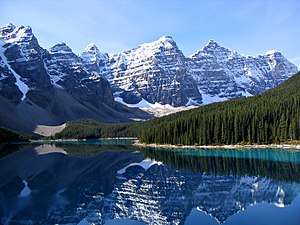
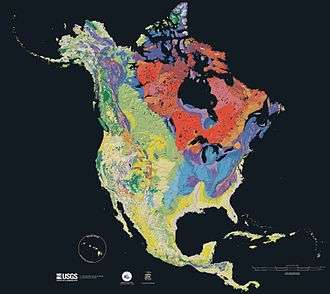

.jpg)

.jpg)
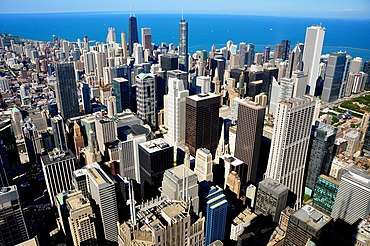
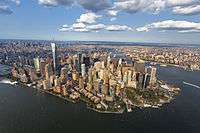
.svg.png)
.svg.png)
.svg.png)
.svg.png)

.svg.png)
_political.svg.png)
.svg.png)
.svg.png)
.svg.png)